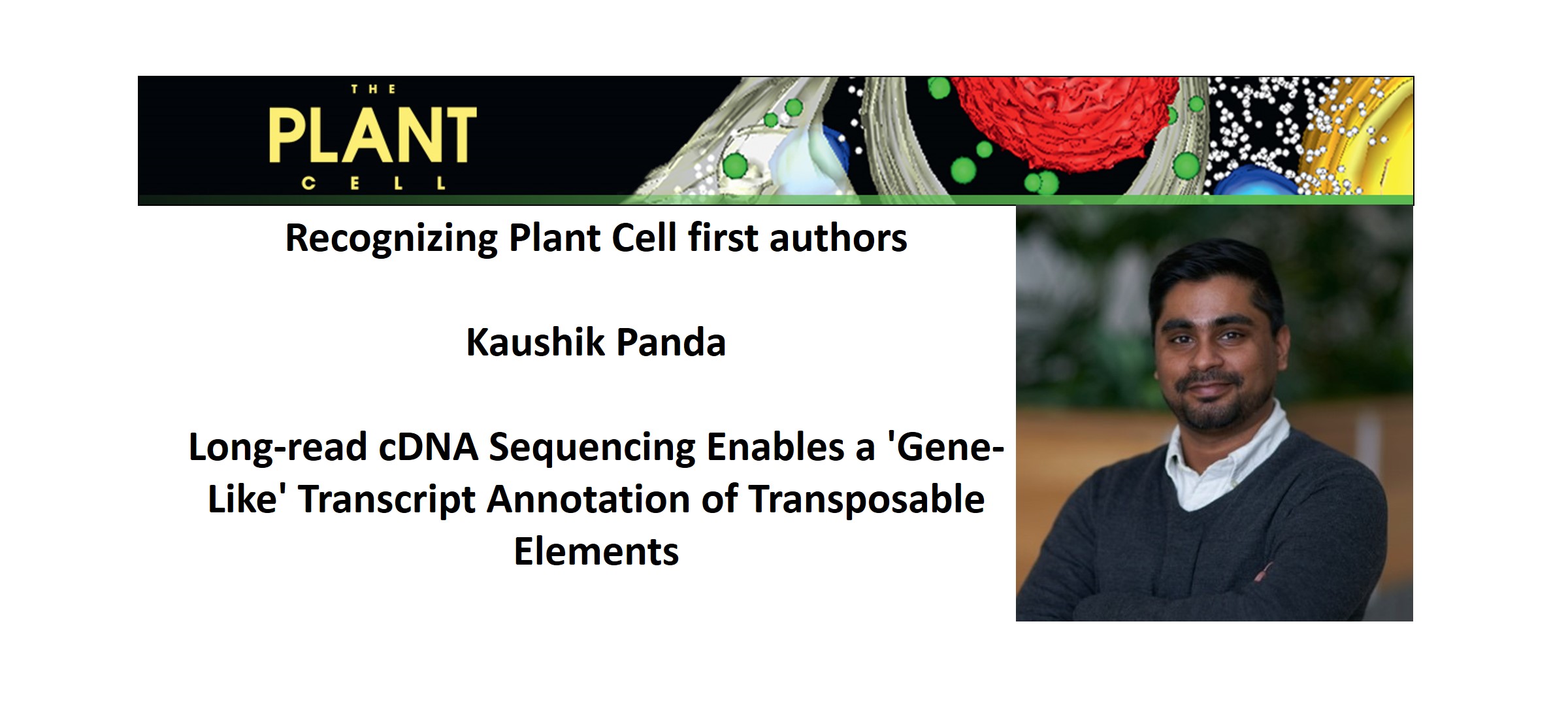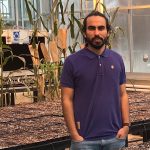Recognizing Plant Cell authors: Kaushik Panda
 Kaushik Panda, first author of Long-read cDNA Sequencing Enables a ‘Gene-Like’ Transcript Annotation of Transposable Elements
Kaushik Panda, first author of Long-read cDNA Sequencing Enables a ‘Gene-Like’ Transcript Annotation of Transposable Elements
Current Position: Postdoctoral Associate in the Slotkin Laboratory at Donald Danforth Plant Science Center, St. Louis, Missouri, USA
Education: Ph.D. in Molecular Genetics, The Ohio State University, Columbus, Ohio, USA; Integrated B.S. & M.S. in Biology, Indian Institute of Science Education and Research – Kolkata, Mohanpur, Nadia, West Bengal, India
Non-scientific Interests: travel, music, cooking, Squash (sport)
Brief bio: Growing up in a country somewhat obsessed with superstitions, I learned to rebel and ask ‘Why?’ when asked to follow specific customs. It was perhaps this ingrained curiosity that caught the attention of my undergraduate Evolution professor who arranged for a short winter internship at a Drosophila research laboratory in JNCASR, India. There, I was fascinated by the concept of circadian rhythms that all organisms use to regulate molecular processes and behavioral patterns. I had the simple responsibility to feed different species of flies and measure their movement at specific intervals in different environmental conditions. It was the first biological experiment I was involved in, and it strongly changed the way I approached science – from memorizing and reciting complicated concepts to understanding how a small aspect of life operates. Later, I undertook a research project to understand the effects of cigarette smoke on a single-cell organism using yeast genetics and finished my Master’s thesis at IISER-Kolkata, India. I subsequently joined the Molecular Genetics Ph.D. program at The Ohio State University, where I met Dr. R Keith Slotkin and was quickly tempted towards the field of repetitive Transposable Elements (TEs). My graduate work involved using whole genome studies to uncover differential regulation of TE silencing, but this work was constantly hindered by the difficulty of using short-read sequencing to study repetitive TE elements. To improve bioinformatic approaches and develop tools that I wish I had access to during my graduate research, which can handle the complexity of TEs, I moved with the Slotkin lab to the Danforth Center, St. Louis as a postdoctoral researcher.



